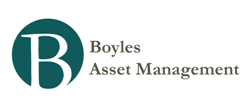Barron's: Corporate Earnings Look Marginal
Are stocks cheap? That depends if you believe the numbers. For particular stocks, they look good; but for the market as a whole, it's not so clear.
Wall Street strategists interviewed for this week's Barron's cover story ("Which Way Up?" ) thought stocks were headed higher. And a cynic might observe that a barber also would probably say you could use haircut. Top clients of Wall Street firms get unvarnished guidance, as with hedge-fund customers of Goldman Sachs who recently were advised on how to profit from the deepening crisis in Europe, as the Wall Street Journal recently reported.
The crux of the mainstream bullish argument for stocks put forth by the marquee-name strategists is that stocks are inexpensive based on standard measures such as price-earnings ratios as well as the equity-risk premium. Both measures depend crucially on corporate earnings forecasts, which are open to uncertainty, however.
The problem with forecasts is that they are about the future, and the future is unknown. Even the recent past is subject to revision, which means what we know ain't necessarily so. And so our expectations are off, which feeds into P/Es and equity-risk premiums.
That thought is prompted by the most recent report from Societe Generale's lead global strategist, Albert Edwards, who is no stranger to readers of this space and Barron's magazine as well. Corporate profit margins were terrific in 2010 but have become less so this year. Labor costs are surging, which is slashing margins. Edwards thinks we are at a tipping point at which companies no longer can pass on cost increases in a low-demand world.
To which I would add that corporations have responded to higher expenses of all types, whether for personnel or materials, by battening down labor costs and whatever else that can be trimmed. Nil jobs growth in August is an example of this effect. It is an example of how QE2 -- the Federal Reserve's purchase of $600 billion of Treasury securities -- has backfired by mainly increasing costs instead of aggregate demand.
In any case, Edwards points out the "remarkable turn for the worse" taken this year by productivity, the ultimate source of our wealth. As a result, unit-labor costs -- a major determinant of corporate earnings and inflation -- have vaulted higher at a faster pace than selling prices.
"This is very bad news for profits. Bad news for equities," he writes. "And because the pace of [unit-labor costs] is a key driver of inflation (upwards in this instance), it is bad news for an increasingly criticized and divided Fed."
Trends in productivity have deteriorated, much more so than thought, given revised data. Edwards notes an initial estimate of first-quarter productivity was revised significantly, to an annualized decline of 0.6% from an increase of 1.8%. As a result, unit-labor costs' increase was revised to a "staggering surge" of 4.8% from 0.7%. In the second quarter, unit-labor costs increased at a 3.3% pace, up from the initial estimate of 2.2%. That puts ULC at a 2% year-on-year rate of increase.
All of which suggests that the extraordinary earnings recovery, based largely on profit-margin expansion instead of top-line growth, is coming to an end. And that has translated to a "near-record decline" in U.S. corporate earnings estimates by analysts over the past six months, Edwards observes.
- Thomas W. Phelps Quote (another On Inflation)
From the book 100 to 1 in the stock market. Remember this was published in 1972. The correct answer to the question, “What does inflation mean to common stocks?” is: “Whatever inflation means to their earnings and dividends.” Inflation is...
- Hussman Weekly Market Comment: Too Little To "lock In"
We've regularly observed that corporate profit margins (and economy-wide, profits as a share of GDP) have a strong tendency to "mean revert" over time - specifically, elevated profit margins are associated with unusually weak earnings growth over...
- Hussman Weekly Market Comment: A False Sense Of Security
One of the aspects of the market that is most likely to confuse investors here is the wide range of opinions about valuation, with some analysts arguing that stocks are cheap or fairly valued, and others - including Jeremy Grantham, Albert Edwards, and...
- Hussman Weekly Market Comment: Impulse Response
Except for a burst of census hiring that briefly pushed payroll growth above trend during the second quarter of this year, job growth has been perpetually below trend over the past two years. During the post-war period, the civilian labor force has historically...
- Hussman Weekly Market Comment: Don't Take The Bait
Investors who allow Wall Street to convince them that stocks are generationally cheap at current levels are like trout - biting down on the enticing but illusory bait of operating earnings, unaware of the hook buried inside. I continue to urge investors...

